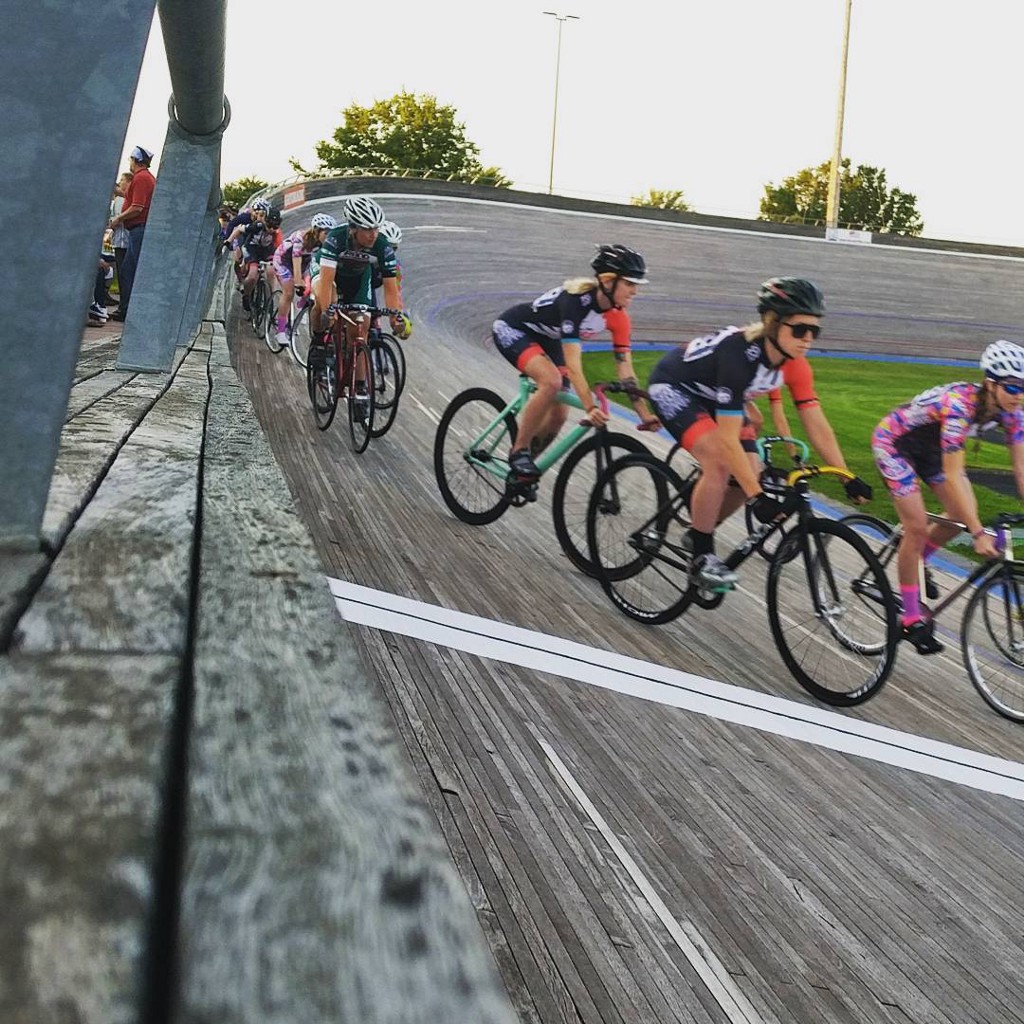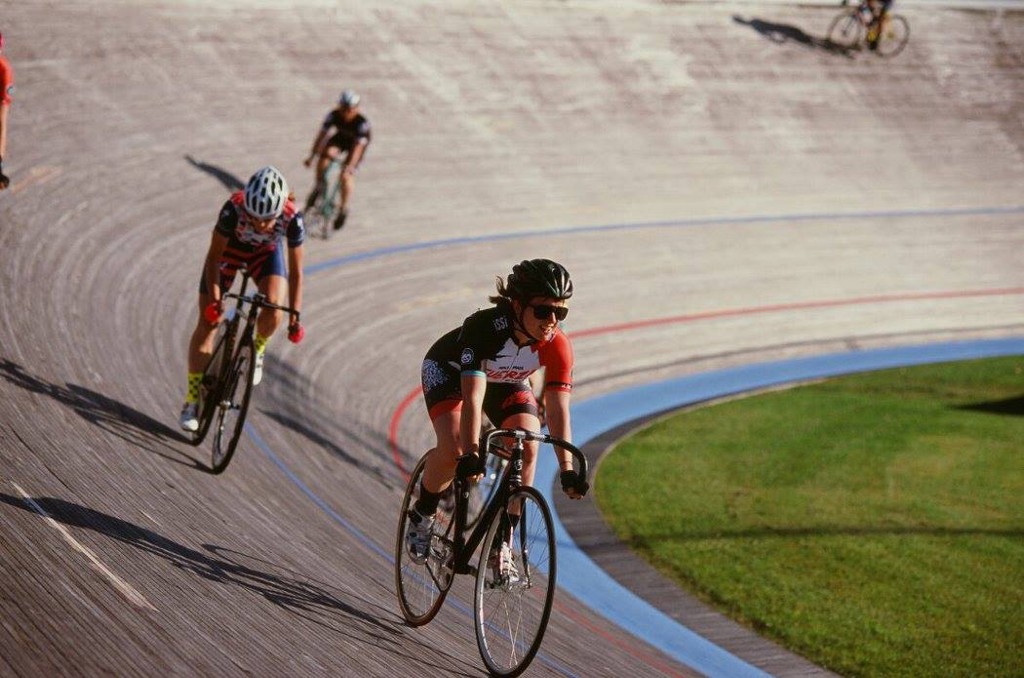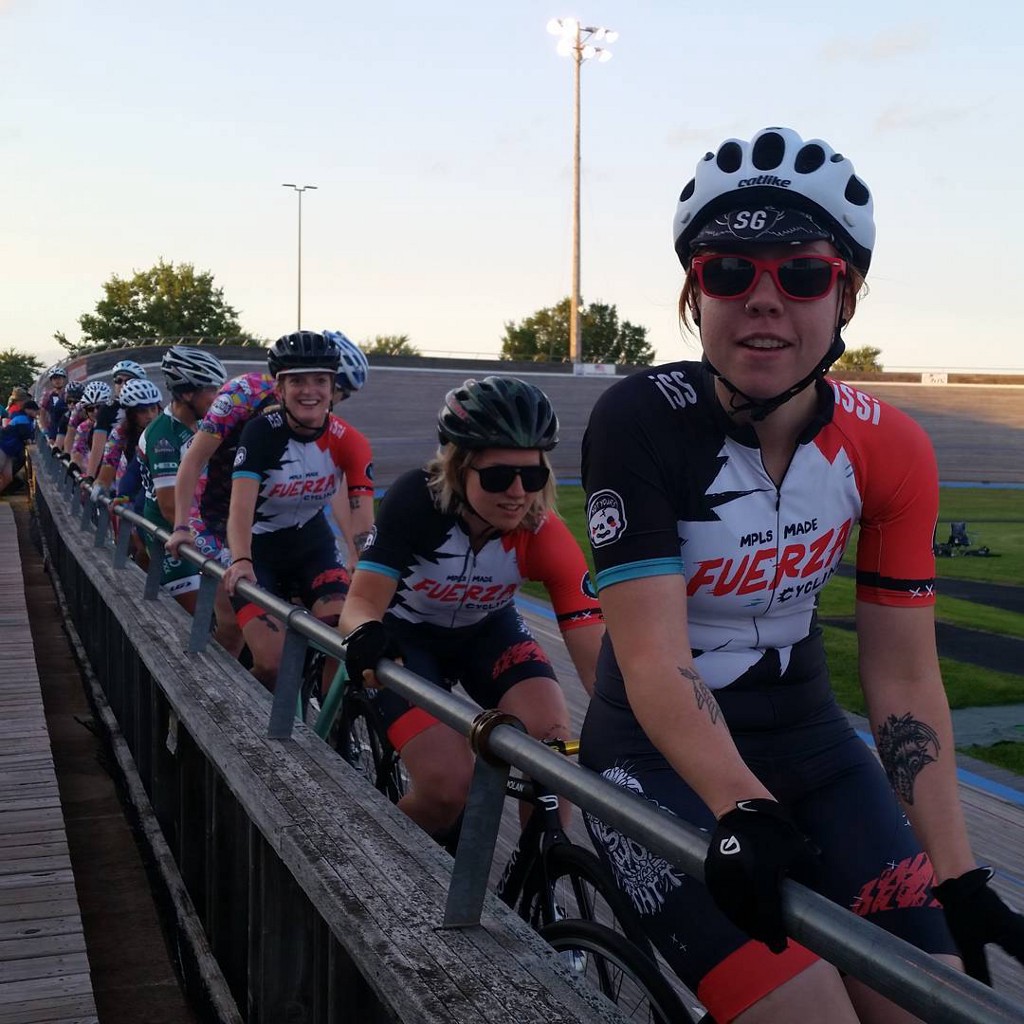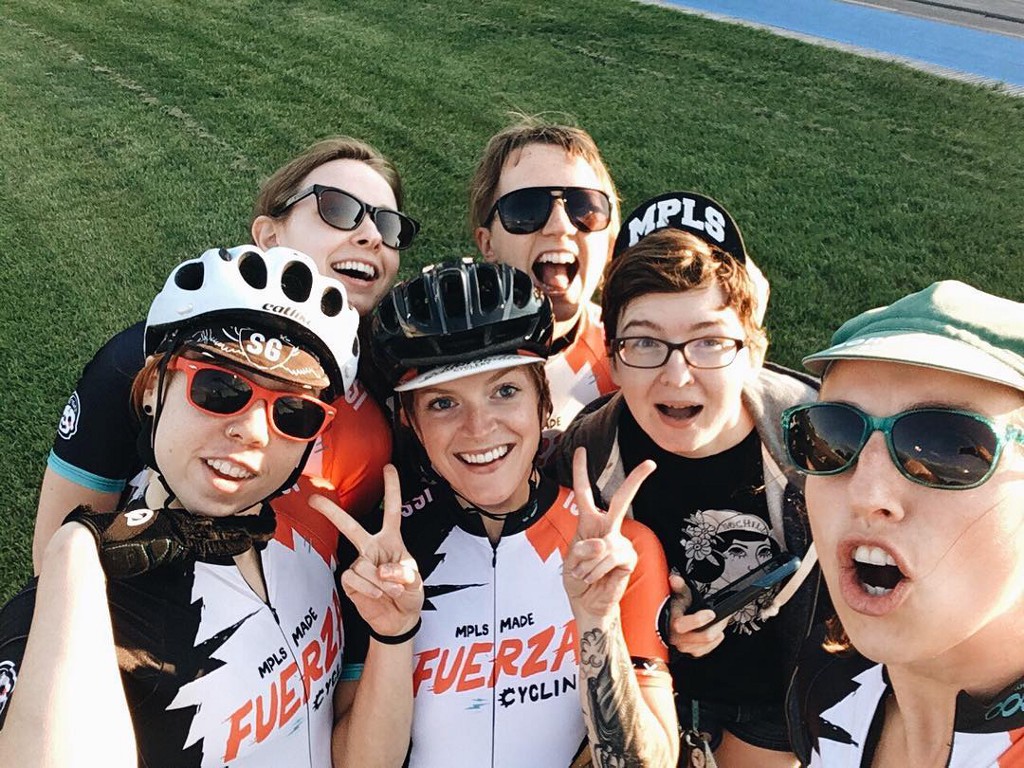The Cost of One Season of Bike Racing
How to race sideways at over 20 miles per hour with no brakes.

It was December two years ago, and I was feeling stagnant. I was in an on-again off-again relationship, I lived in an apartment with three cats and too many dirty dishes, I was back in the state where I grew up and went to college, and it felt like it had been winter forever.
I spent hours clicking around aimlessly online, and became fixated on the website of a local women’s bike racing team. They were cool, and wore neon spandex uniforms, and were mostly covered in tattoos. Their recruitment for that year’s season had already ended, but the thought of racing wedged in a corner of my brain. I ended up applying the following winter. I got an email in February telling me that I hadn’t been accepted, but that they were trying to start a new team, if I was interested in that. I was.
The new team that formed is called Fuerza Cycling. Ten of our eleven team members had never ridden on the track prior to joining the team. We needed track bikes, and uniforms, and a website, and also to learn how to ride a bike practically sideways without falling off. Six months later, we’ve done all of that.
It’s been incredibly fun, and it’s also been incredibly expensive. I knew I would have to spend some money to race, but I had no real idea how much. My team’s season has now wrapped up, so I can do a full accounting for just how much money I spent.
The cost:
- Intro class: $100. You’re required to take a four-class introduction to track riding class before you can race. Ten of my teammates and I took the all-WTF (Women, Trans, Femme) class that was offered in the late spring. We were deemed ready to race after eight hours of class time. This seemed like a somewhat short amount of time to become ready to race sideways at over 20 miles per hour with no brakes.
- Race nights: $255. It costs $30 a night to race in the weekly Thursday Night Lights race series at the velodrome. That gets you three races in your race category. The races vary in length and type — from a two-lap “chariot” sprint, to a 24-lap race with sprints every eight laps, to a race where the last rider is eliminated every other lap. It costs an additional $5 per race night to rent a bike. My bike wasn’t built up until halfway through the season, so I rented a bike for my first three races.
- Bike frame: $350. It’s pretty hard to find track frames that are small enough for a short woman (I’m 5’2”). The Minneapolis track scene has the largest field of women in the country, but it’s absolutely a male-dominated sport. Disappointingly, that’s reflected in the range of sizes available for the specific frame needed, and it was tricky to find small track frames. I ended up finding a decent sized frame at a good price from eBay, and got it shipped to my house.

- Components and build: $20. The frame came with a fork (the part that holds the front wheel), a seatpost (the part that holds the bike seat), and a stem (the part that hold the handlebars), but nothing else. Track bikes are pretty stripped down — no gears, no brakes — but it still needed additional parts. I took it into my team’s shop sponsor, and the ridiculously generous owner built it up with components he already had for free. After pressing him for how I could compensate him, he agreed to a six-pack. I also baked him chocolate chip cookies, and the ingredients and beer cost about twenty bucks.
- Training: $30. There’s structured training once a week at the track. You can buy a season training pass for $260 and go as many times as you want, or pay $30 a pop for the structured training. I went once.
- Skinsuit: $130. You know the spandex outfits that middle-aged dudes who seem like total assholes wear as they’re speeding past you on your commute? I wear one of those outfits too. I am the asshole. The main benefit to this is that you feel like a superhero in your supersuit, and also you have a padded butt area.
- Road shoes: $50. You don’t technically need clip-in bike shoes (which are, nonsensically, actually called “clipless”) to race on the track. That being said, literally everyone wears them. My team had a very generous sponsor donate pedals to everyone on our team. However, there are two kinds of pedals, each of which matches a different kind of shoe. I had the kind of shoes that didn’t match the pedals we were given. Thus, new-to-me shoes from someone selling them on a local Facebook group.
- Bike clothes: $85. I bought two pairs of padded butt bike shorts and two jerseys for training and learning to ride the track. The shorts costs $25 each, and the jerseys cost $15 and $20. I bought them from an outdoor gear consignment store, and from the same Facebook group as the shoes.
- Gloves: $0. You would think that wearing relatively thin, padded leather gloves would not really make any difference at all. You would be wrong. I can’t explain the magic of why cycling gloves are bizarrely useful, but trust that they are. My boyfriend gave me his for free.
- Sunglasses: $10. A lot of people wear fancy polarized sunglasses and look like athletic spies from the 90s. I know there is a reason why those sunglasses are better, but I have no idea what it is. I bought sunglasses from a thrift store.

- Apparel: $25. Our team sold cycling caps and t-shirts for merch this year, and I bought both at cost. The caps were $17, and the t-shirts were $7.
- Food and drinks: $83.30. I am a nerd, and I love routines. I bought the same Amy’s Bean & Rice Burrito ($3), banana ($0.20), and Crunchy Peanut Butter Clif Bar ($1.35) from my local co-op for almost every night of racing. My team also had biweekly rides to our distillery sponsor, and I went to three of those. They happened around dinner time, so I would buy a drink there ($5) and order food delivered ($14). I also brought yogurt ($5) and granola ($4) to two brunch team meetings.
TOTAL: $1,138.30
That’s over a thousand dollars blown through in the course of roughly four months. Cycling, as a sport, is ridiculously expensive. Next season will be cheaper in some ways — I won’t need to buy a bike, or the intro class — but I’m also planning to spend money on training in the off-season, and buying a full-season training pass during the season. So it’ll probably end up being about the same cost.

For me, doing this works because I have a well-paying job, my rent is pretty cheap, and I don’t spend my money on too many other things. Spending this amount of money feels a little ridiculous, but it’s doable for me. And what I get out of it — a supportive team of powerful women, an outlet for my competitive energy, a reason to exercise and stay in shape — makes it more than worth it.
Anna Schmitz listens to Beyoncé and rides her bike in circles in Minneapolis, Minnesota.
Support The Billfold
The Billfold continues to exist thanks to support from our readers. Help us continue to do our work by making a monthly pledge on Patreon or a one-time-only contribution through PayPal.
Comments